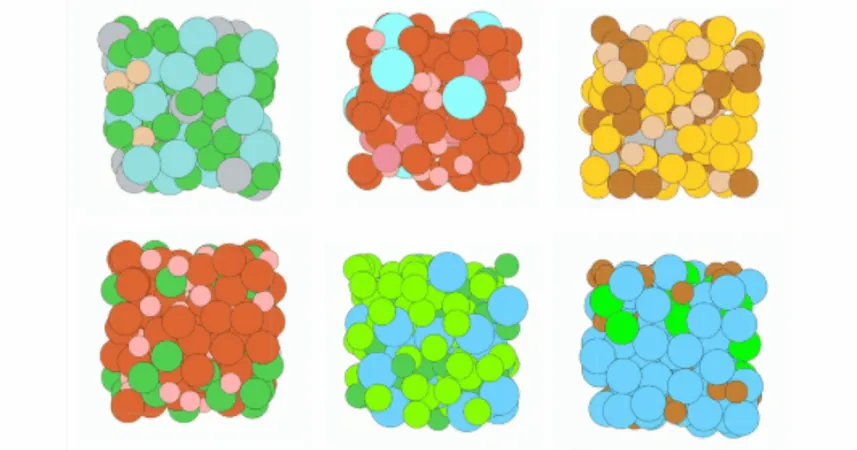
Hubble Unveils Uranus' Rotation Rate with Groundbreaking Precision – What This Means for Future Missions!
2025-04-07
Author: Liam
Introduction
In a stunning advancement for planetary science, an international team of astronomers utilizing the NASA/ESA Hubble Space Telescope has dramatically refined our understanding of Uranus’ interior rotation rate, achieving an accuracy 1,000 times greater than previously obtained measurements. This breakthrough comes from over a decade of observing the planet’s striking aurorae, a phenomenon caused by energetic particles interacting with its magnetic poles.
The Research Team and Their Findings
The research led by Laurent Lamy from the Observatoire de Paris-PSL and Aix-Marseille University employed a novel technique to track the rotation of Uranus through its auroras. "Our measurement not only provides a critical reference point for planetary research but also resolves a long-standing debate regarding Uranus' rotation," Lamy stated. The new findings reveal that Uranus completes a full rotation in 17 hours, 14 minutes, and 52 seconds—28 seconds longer than the previous estimate made during NASA’s Voyager 2 flyby in 1986.
Importance of the New Rotational Period
The refinement of the rotational period is crucial as it establishes a new coordinate system, allowing astronomers to effectively track Uranus' magnetic poles over time. This became especially necessary since outdated coordinate systems quickly fell out of accuracy, impacting long-term studies. "Now, with our new longitude system, we can compare auroral observations that span nearly 40 years and make informed plans for future missions to Uranus," Lamy elaborated.
Hubble’s Role in the Research
Hubble’s exceptional long-term observations of Uranus have been pivotal in this research. The telescope has been consistently monitoring the planet’s ultraviolet auroral emissions, which has enabled scientists to effectively model and track changes in the magnetic field. "The continuous data stream from Hubble was instrumental in detecting the periodic signal with high precision," Lamy emphasized.
Uranus’ Unique Auroral Behavior
Unlike the familiar auroras seen on Earth or those produced by Jupiter and Saturn, Uranus’ auroras exhibit unpredictable behavior, attributed to the planet’s magnetic field being highly tilted. This unusual orientation significantly deviates from its rotational axis, providing further challenges and fascinating opportunities for researchers.
Future Exploration
With this new knowledge in hand, the Planetary Science Decadal Survey in the U.S. has identified the Uranus Orbiter and Probe concept as a high priority for future exploration, paving the way for more detailed studies that could revolutionize our understanding of this distant ice giant.
Conclusion
As we look towards new missions, these findings not only advance our scientific knowledge but also prepare us to unveil the mysteries of Uranus and beyond. What astonishing secrets will future explorations reveal about our solar system's enigmatic giants? Stay tuned!









 Brasil (PT)
Brasil (PT)
 Canada (EN)
Canada (EN)
 Chile (ES)
Chile (ES)
 Česko (CS)
Česko (CS)
 대한민국 (KO)
대한민국 (KO)
 España (ES)
España (ES)
 France (FR)
France (FR)
 Hong Kong (EN)
Hong Kong (EN)
 Italia (IT)
Italia (IT)
 日本 (JA)
日本 (JA)
 Magyarország (HU)
Magyarország (HU)
 Norge (NO)
Norge (NO)
 Polska (PL)
Polska (PL)
 Schweiz (DE)
Schweiz (DE)
 Singapore (EN)
Singapore (EN)
 Sverige (SV)
Sverige (SV)
 Suomi (FI)
Suomi (FI)
 Türkiye (TR)
Türkiye (TR)
 الإمارات العربية المتحدة (AR)
الإمارات العربية المتحدة (AR)